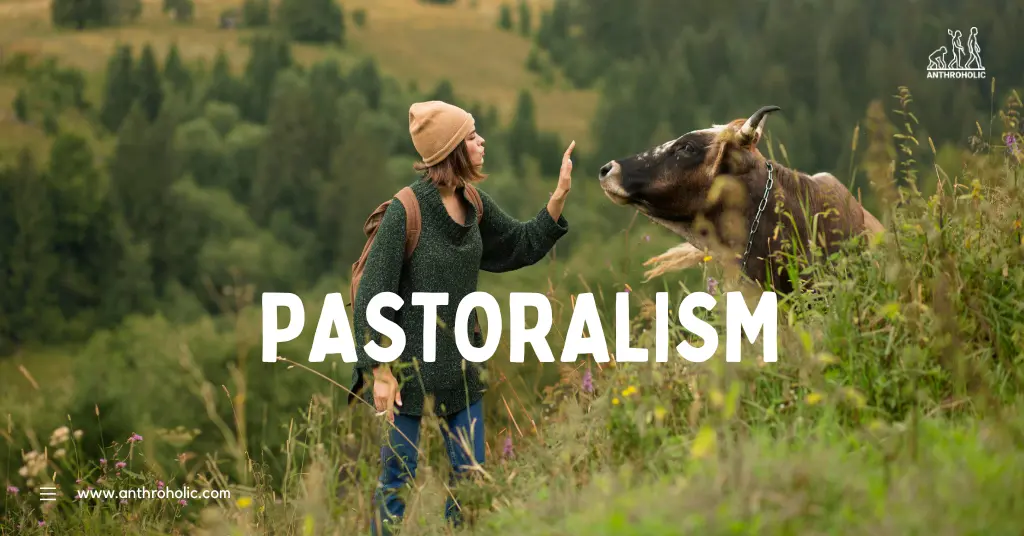AI Answer Evaluation Platform Live Now. Try Free Answer Evaluation Now
Pastoralism
Pastoralism, a subsistence pattern practiced by approximately 200 million people worldwide, has etched an indelible mark on human history. Predominantly occurring in the arid and semi-arid regions of the world such as the African Sahel and Central Asia, it hinges upon the domestication of animals and their products for livelihood [1].

Small Population
In a pastoral economy, population size remains relatively small. This small population size is primarily attributed to the following reasons:
- Limited Carrying Capacity: The arid regions where pastoralism thrives can support only a limited number of people due to scarce resources.
- Mobility Constraints: A larger population becomes difficult to manage, particularly in regards to the mobility that characterizes pastoral life [2].
A comparative overview of the population sizes in different pastoral communities worldwide is represented in Table 1.
| Region | Approximate Population Size |
|---|---|
| African Sahel | 20 million |
| Central Asia | 30 million |
| Middle East | 10 million |
Domestication of Animals
The domestication of animals is a cornerstone of pastoralism. Pastoral communities tend to favor species that are resilient and can thrive in harsh environments such as camels, goats, sheep, and yaks. The choice of animals to domesticate varies regionally, based on climate, terrain, and nutritional value.
For example, in the Saharan region, camels are a preferred choice due to their adaptation to arid conditions and ability to provide milk, meat, wool, and transportation. On the other hand, in the Tibetan plateau, yaks are preferred due to their ability to withstand cold conditions and their multifunctional role in providing milk, meat, hides, and transportation [3].
Semi-Nomadism
Pastoral communities often exhibit semi-nomadic behavior, continually migrating with their herds in search of fresh pastures and water. This mobility serves several crucial purposes [4]:
- Resource Optimization: Pastoralists move to exploit seasonal availability of resources, enhancing the productivity of their herds.
- Disease Management: Mobility also helps in preventing the outbreak of diseases by limiting the duration animals spend in a single area, thus reducing exposure to pathogens.
- Social Interaction: These movements facilitate interactions with other groups, enabling trade and intermarriage, and strengthening social ties.
However, this semi-nomadic lifestyle leads to a set of unique challenges. These include potential conflict with sedentary communities, governmental policies discouraging mobility, and the constant threat of extreme weather conditions.
Transhumance
Transhumance, a specific type of pastoralism, involves regular seasonal migration from lower altitudes in winter to higher altitudes in summer. This seasonal movement between fixed points allows efficient utilization of pastures, ensuring livestock get the best possible nutrition throughout the year.
Examples of transhumant societies include the Fulani in West Africa, who move with their cattle following seasonal rains, and the Swiss cowherds, who move their cows up into alpine pastures in the summer and back to the valleys in the winter.
Sustainable Livelihoods and Climate Resilience
Pastoral economies, although often perceived as primitive and static, have proven to be dynamic and resilient. By adhering to a lifestyle that emphasizes flexibility, mobility, and adaptation, pastoral communities exhibit extraordinary resilience against climate variability and other environmental shocks.
Pastoralists’ strategic mobility allows them to exploit patchy resources and navigate the ecological uncertainty that characterizes arid and semi-arid environments. Furthermore, they have developed an intimate understanding of their environment, employing traditional ecological knowledge to predict weather patterns and locate pastures.
Challenges Faced by Pastoral Communities
Despite their resilience and contribution to biodiversity and food security, pastoral communities face numerous challenges in a rapidly changing world:
- Loss of Grazing Lands: Expansion of agricultural activities, urbanization, and land privatization often result in a loss of communal grazing lands, restricting the mobility of pastoralists and reducing the viability of their livelihoods.
- Policy and Legal Issues: Government policies often favor sedentary farming and overlook pastoralists’ rights, resulting in marginalization and conflicts over resources.
- Climate Change: Increased climate variability and extreme weather events pose significant risks to pastoral livelihoods, as they heavily rely on weather patterns.
- Health Risks: Pastoralists face several health risks due to their close association with animals and limited access to healthcare services.
Pastoralism in the Modern World
Despite these challenges, pastoralism remains a viable livelihood in many parts of the world. Recent trends indicate a growing appreciation of the value of pastoralism in terms of biodiversity conservation, climate change mitigation, and food security. Sustainable pastoralism involves recognition and protection of pastoralists’ rights, investment in pastoralist areas, integration of traditional and modern knowledge, and provision of appropriate services such as mobile schools and healthcare.
Pastoral societies are an essential facet of our global heritage, providing insights into humanity’s historical relationship with the environment. As such, understanding and supporting these societies is vital not only for their preservation but for our broader understanding of sustainable ways of living on our planet.
Conclusion
Pastoral economies, characterized by small populations, domestication of animals, semi-nomadism, and transhumance, play a crucial role in the livelihoods of many communities across the world. Despite the challenges they face, these communities have demonstrated remarkable resilience, adapting to harsh environments while maintaining their unique cultural traditions.
Despite the modern world’s progression, pastoralist societies continue to contribute significantly to global biodiversity and food security, thereby justifying their prominence in anthropological discourse.
References
[1] Niamir-Fuller, M. (1999). Managing Mobility in African Rangelands. Beijer International Institute of Ecological Economics, Stockholm.
[2] Dyson-Hudson, R., and Dyson-Hudson, N. (1980). Nomadic Pastoralism. Annual Review of Anthropology, Vol. 9, pp. 15-61.
[3] Ingold, T. (1980). Hunters, pastoralists, and ranchers: Reindeer economies and their transformations. Cambridge University Press.
[4] Scoones, I. (1994). Living with Uncertainty: New Directions in Pastoral Development in Africa. Intermediate Technology Publications.




